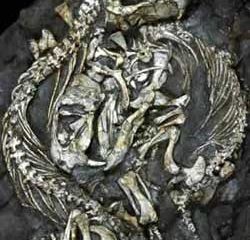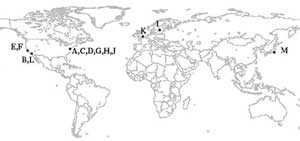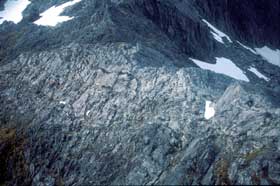
A vaccine aimed against AIDS, developed at the Yerkes National Primate Research Center of Emory University, the Emory Vaccine Center, and the Laboratory of Viral Diseases at the National Institute of Allergy and Infectious Diseases (NIAID) of the National Institutes of Health (NIH), will begin a Phase I clinical trial this week.
A total of 30 human volunteers will be enrolled at the University of Alabama at Birmingham, the University of Washington in Seattle, and the San Francisco Departmen

Findings point to complex social behaviour
The large tusks of an animal that roamed Earth before the dinosaurs may provide the earliest evidence yet of male-female distinctions in land animals that existed millions of years ago, say U of T scientists.
Robert Reisz, a biology professor at the University of Toronto at Mississauga, and his team have found convincing evidence of sexual dimorphism – different physical traits between the sexes of the same species – in their study

Scientists at the San Diego Supercomputer Center (SDSC) at UCSD analyzing traffic to one of the 13 Domain Name System (DNS) “root” servers at the heart of the Internet found that the server spends the majority of its time dealing with unnecessary queries. DNS root servers provide a critical link between users and the Internet’s routing infrastructure by mapping text host names to numeric Internet Protocol (IP) addresses. Researchers at the Cooperative Association for Internet Data Analysis (CAIDA) at

Recent research shows that insects and humans have something surprising in common: Some six-legged species take in oxygen using a similar means to the way we fill our lungs.
Scientists from the Field Museum and Argonne National Laboratory in Chicago and from Clemson University used a powerful x-ray imaging device to get the first comprehensive view of live insects breathing. Their observations and research results are reported in the Jan. 24 issue of Science, an internationally respected res

Understanding how mountains form is critically important — from volcanic eruptions to earthquakes to catastrophic mudslides, the geologic processes active in mountain belts affect human societies every day. Yet, even though mountains are on all continents and in all ocean basins, scientists still understand relatively little about the forces that interact to form and destroy mountains, how mountains change over time, and the relationship between mountains and Earth’s climate.
To better

Video cameras are used to keep an eye on many indoor and outdoor locations, but to pinpoint suspicious activity, human security guards or intelligence analysts have the unenviable task of watching dozens of video monitors or many hours of recorded video.
Supported by an NSF award, Jezekiel Ben-Arie and his students at the University of Illinois at Chicago have developed a technique, much faster and more reliable than previous methods, that allows a computer to recognize a human action contai

Operations teams have confirmed NASA’s mission to “touch” the Sun survived its record-breaking closest approach to the solar surface on Dec. 24, 2024. Breaking its previous record by flying just…

At the Berlin synchrotron radiation source BESSY II, the largest magnetic anisotropy of a single molecule ever measured experimentally has been determined. The larger this anisotropy is, the better a…

LSU quantum researchers uncover hidden quantum behaviors within classical light, which could make quantum technologies robust. Understanding the boundary between classical and quantum physics has long been a central question…

Exploiting an ingenious combination of photochemical (i.e., light-induced) reactions and self-assembly processes, a team led by Prof. Alberto Credi of the University of Bologna has succeeded in inserting a filiform…

A team led by plant biotechnologist Prof Markus Schwarzländer from the University of Münster and biochemist Prof Bruce Morgan from Saarland University has developed new biosensors with which the ratio…

How deubiquitinases USP53 and USP54 cleave long polyubiquitin chains and how the former is linked to liver disease in children. Deubiquitinases (DUBs) are enzymes used by cells to trim protein…

Long gone are the days where all our data could fit on a two-megabyte floppy disk. In today’s information-based society, the increasing volume of information being handled demands that we…

In the search for new materials that can enable more efficient electronics, scientists are exploring so-called 2-D materials. These are sheets of just one atom thick, that may have all…

How simulations help manufacturing of modern displays. Modern materials must be recyclable and sustainable. Consumer electronics is no exception, with organic light-emitting diodes (OLEDs) taking over modern televisions and portable…

AQSolotl’s quantum controller is designed to be adaptable, scalable and cost-efficient. Quantum technology jointly developed at Nanyang Technological University, Singapore (NTU Singapore) and National University of Singapore (NUS) has now…

Pacific Northwest National Laboratory to contribute leadership to national effort in microelectronics design and development. Microelectronics run the modern world. Staying ahead of the development curve requires an investment that…

With a processing speed a billion times faster than nature, chip-based laser neuron could help advance AI tasks such as pattern recognition and sequence prediction. Researchers have developed a laser-based…